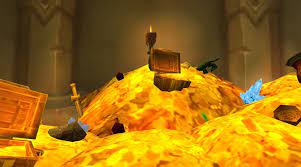The spectacle of a football soaring across the field, defying gravity and reaching its intended target with precision, is a sight to behold. For quarterbacks and aspiring athletes, the ability to how to throw a football farther, is not just about strength, but a culmination of technique, athleticism, and dedication. Whether you’re a seasoned quarterback aiming to enhance your game or a beginner looking to grasp the fundamentals, this article will guide you through the mechanics, training, and mindset required to achieve those jaw-dropping long throws.
- The Power of Proper Mechanics:
At the heart of an effective long throw is impeccable throwing mechanics. A successful throw doesn’t rely solely on arm strength; it’s a harmonious blend of kinetic energy, core engagement, and sequencing. Begin by perfecting your grip. Hold the football with your index and middle fingers resting on the laces. Your thumb should sit on the bottom panel, offering stability and control.
- Establish a Strong Stance:
A sturdy stance forms the foundation for a powerful throw. Stand with your feet shoulder-width apart, with your dominant foot slightly back. Flex your knees slightly to maintain balance and create a coil-like energy that can be transferred into your throw.
- The Kinetic Chain:
Unlocking the potential of your arm begins with utilizing your lower body. As you initiate the throw, shift your weight from your back foot to your front foot, driving power from your legs through your core and into your arm. The hips and shoulders should work in tandem, creating a whip-like motion that propels the football forward.
- Torque and Hip-Shoulder Separation:
The separation between your hips and shoulders is the secret to generating torque – the twisting force that amplifies your throw. As your hips pivot forward, your throwing-side shoulder should remain back, creating tension. The rapid rotation of your shoulders catching up with your hips results in an explosive release of energy.
- Engage the Core:
A strong core isn’t just about aesthetics; it’s a vital component of a long throw. Engage your abdominal muscles to maintain stability and transfer power smoothly from your lower body to your arm. A solid core ensures that the energy generated is effectively channeled, maximizing the force of your throw.
- Balance and Follow-Through:
After releasing the football, your follow-through should be fluid and controlled. Your throwing arm should extend fully towards your target, promoting accuracy and balance. The non-throwing arm should point downfield, aiding in maintaining equilibrium.
- Flexibility and Mobility:
Flexibility enhances your throwing range and mechanics. Regular stretching, especially targeting the shoulders, hips, and torso, allows for a more extensive throwing motion. The longer your range of motion, the more potential you have to harness power from various angles.
- Weight Training and Conditioning:
While a cannon-like arm is appealing, functional strength is key. Incorporate weight training exercises that target your shoulders, upper back, and core muscles. Compound movements like shoulder presses, rows, and planks build not only strength but also stability, reducing the risk of injuries.
- Specific Drills and Practice:
To improve your throwing distance, incorporate drills that emphasize different aspects of the throw. Focus on footwork drills to enhance weight transfer, incorporate resistance bands to build arm strength, and practice throwing from various angles to simulate real game situations.
- Mental Conditioning:
A long throw requires mental fortitude. Visualize successful throws, maintain focus, and develop confidence in your abilities. Overthinking can lead to hesitations, affecting your throw’s power and accuracy. A clear and confident mind is as crucial as physical prowess.
- Seek Feedback and Coaching:
Feedback is a catalyst for growth. Record your throws and analyze them to identify areas for improvement. A coach or experienced player can provide insights that may not be apparent to you, guiding you towards refinement.
- Consistent Effort and Patience:
Becoming a quarterback with a powerful throw takes time and commitment. Consistent practice, dedication to refining your technique, and a patient approach are essential. Progress may not always be linear, but each step brings you closer to your goal.
In the world of football, a powerful throw isn’t just about the destination; it’s about the journey of mastering your body’s mechanics, honing your skills, and pushing your limits. By understanding the intricate dance of physics, athleticism, and technique, you can unlock your arm’s full potential and become a quarterback capable of sending the football soaring across the field, creating unforgettable moments on the gridiron.





